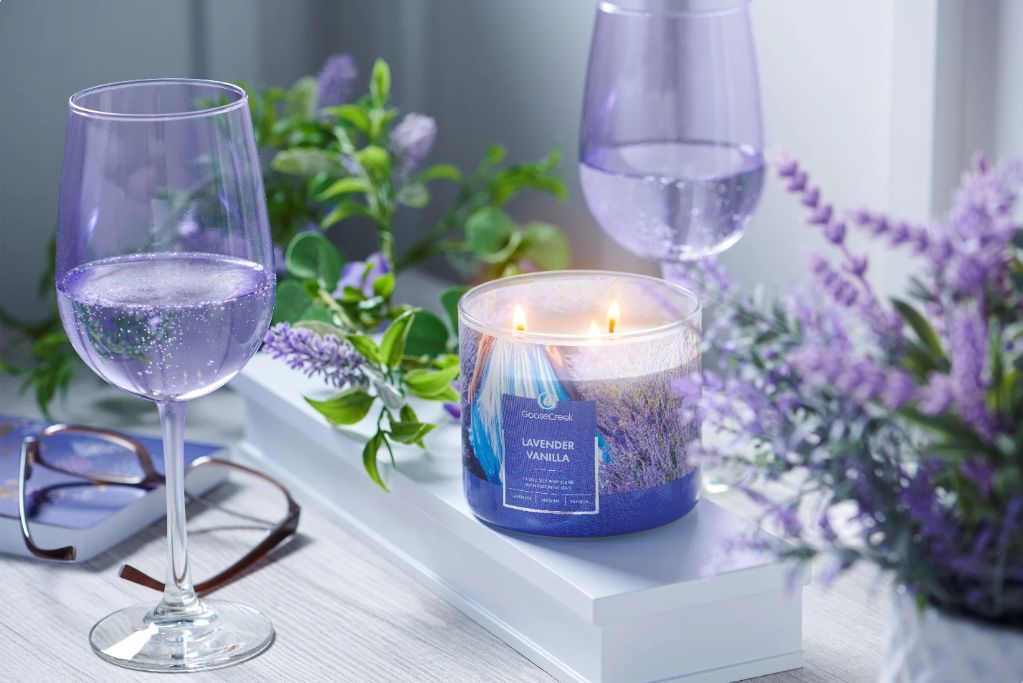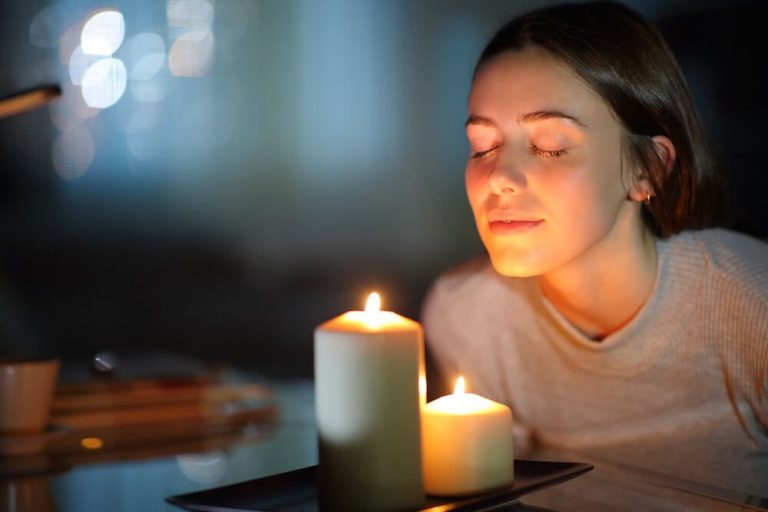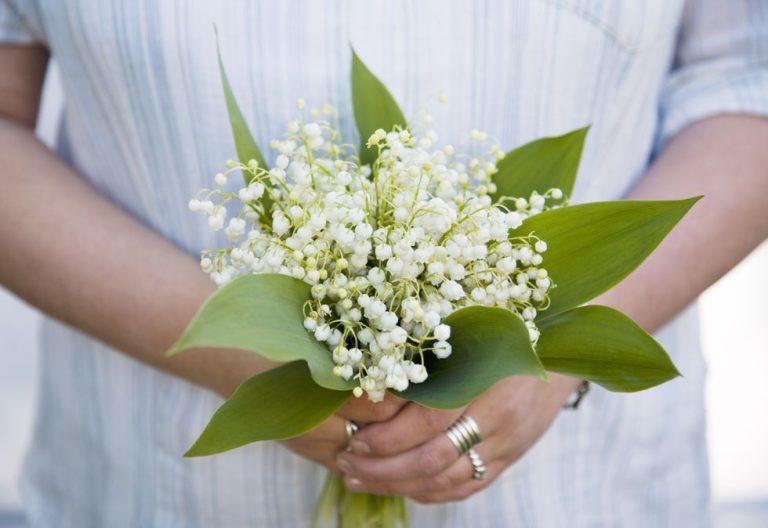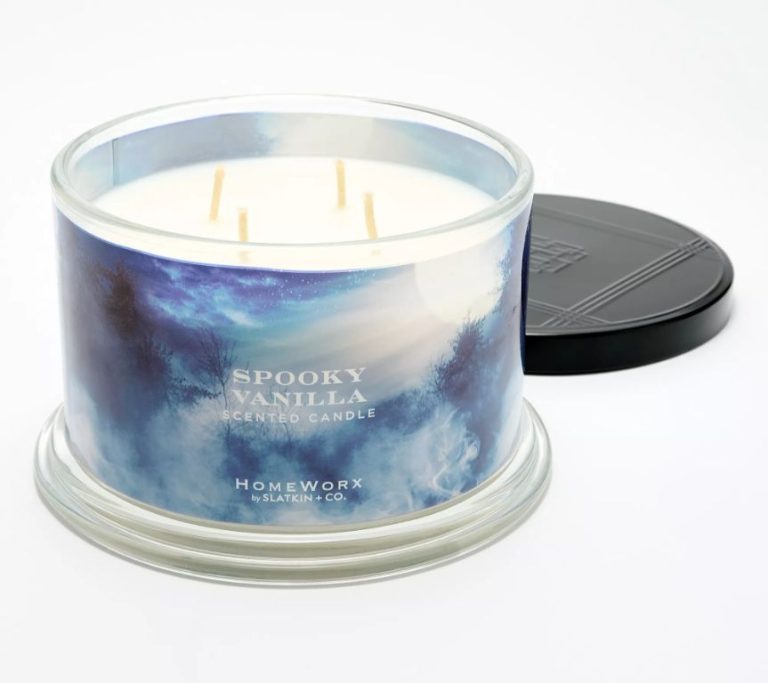Do Essential Oils Work In Homemade Candles?
Essential oils are concentrated, volatile plant extracts that are derived from flowers, leaves, stems, roots, seeds, bark or peel. They are believed to capture the “essence” of the plant and provide various mental, emotional and physical health benefits. Common uses include aromatherapy, skin care, cleaning products and flavoring food or drink.
The global market for essential oils was valued at $10.47 billion USD in 2022 and is predicted to reach $22.41 billion by 2030, indicating the immense popularity of these plant-based oils [1]. Homemade candles have also risen in popularity as a therapeutic hobby and inexpensive home décor. Many candle makers believe adding essential oils enhances the benefits of candle therapy and customizes the candle’s aroma. However, there is debate around whether the volatile compounds in essential oils remain intact and effective when burned in candle wax.
How Essential Oils Work
Essential oils are aromatic compounds extracted from plants, often through steam distillation of the leaves, flowers, stems, bark, or roots. As defined by experts at Johns Hopkins Medicine, essential oils are “highly concentrated essences extracted from flowers, trees, seeds, roots, herbs, and fruit.”
Each essential oil is composed of unique chemical compounds that give it therapeutic, aromatic, and topical benefit. Proponents claim a diverse range of health benefits from using essential oils including improved mood, reduced pain and inflammation, help with sleep and anxiety, and more. However, most of these claims lack solid scientific evidence according to a report from Cleveland Clinic.
Essential oils release their aroma through evaporation. As the volatile aromatic compounds found in essential oils evaporate, they spread throughout the air and are inhaled, providing an aromatic experience. The evaporated compounds stimulate smell receptors in the nose that transmit signals to the limbic system in the brain which influences emotions and memories. This produces the purported emotional and psychological effects of essential oils.
Using Essential Oils in Candles
The goal of adding essential oils to candle wax is to provide fragrance and potentially aromatherapeutic benefits. When burned, the heat from the candle flame helps to release the natural oils from plants, filling the air with scent. Popular oils like lavender and eucalyptus can provide calming or energizing aromas when used in candles.
It’s important to follow best practices when adding essential oils to candle wax. Oils should be mixed thoroughly to distribute evenly throughout the wax before pouring candles. Most experts recommend adding oils at a rate of 1-2% by weight of the wax so as not to overwhelm the wax’s natural scent. Adding more than 5% may lead to an unpleasant smell when burned or negatively impact the candle’s burn properties.
Some of the most commonly used essential oils in candle making include lavender, eucalyptus, peppermint, lemongrass, tea tree, rosemary, grapefruit, and orange. Their popularity stems from their strong scents that blend well with wax (Source 1). When selecting oils, it’s best to choose those with scents you find appealing and experiment to find your desired fragrance.
Potential Benefits

Some people believe that using essential oils in candles can provide aromatherapy benefits. The scent from essential oils may have effects on mood, stress, anxiety, and sleep.
Certain essential oil scents are claimed to have calming properties that can help relieve stress and anxiety. For example, lavender and chamomile essential oils are commonly touted as relaxing aromas that can potentially lower stress levels (Harlem Candle Company).
Other essential oil scents like citrus and mint are said to have an energizing effect that can potentially boost mood. Proponents believe the invigorating scents may help increase alertness and concentration (Pure Integrity).
Using candles with sleep-promoting essential oils like lavender is thought to help create a calming environment that may make it easier to fall asleep. However, there is limited scientific evidence to conclusively support these claims (Makesy).
Lack of Scientific Evidence
While some small studies have looked at the effects of essential oils used in diffusers or massage, there is a notable lack of scientific research specifically on essential oil candles. A comprehensive literature review found no rigorous, large-scale studies investigating the health benefits or efficacy of essential oil candles (Pure Integrity).
The few small studies that exist suffer from limitations like lack of control groups, short study duration, and self-reported data. This makes it difficult to draw definitive conclusions on whether any observed effects are truly due to the essential oils or simply the placebo effect. Essential oil companies frequently exaggerate claims about the benefits of their candles without strong scientific evidence to back them up.
While many people enjoy essential oil candles and report benefits like relaxation and stress relief, rigorous research has not confirmed that these effects are significantly greater than those from unscented candles (Karningsih 2022). More high-quality studies are needed to evaluate essential oil candle claims beyond the placebo effect.
Safety Concerns
When using essential oils in candles, there are some safety concerns to be aware of. Many essential oils can cause allergic reactions or skin irritation in some people, especially oils like lemon, orange, and citronella (https://soycandlemakingtime.com/can-i-use-essential-oils-in-soy-candles/). It’s important to do a patch test before using a new essential oil. Additionally, the National Candle Association recommends avoiding essential oils that are phototoxic, like bergamot, because the reactions are amplified when exposed to light from the candle flame (https://www.candles.org/candle-safety).
Essential oils can also be toxic to pets if ingested. Cats are especially sensitive. Make sure candles with essential oils are kept safely out of reach of children and pets. It’s best to extinguish candles when leaving a room or going to sleep.
Best Practices
When using essential oils in candles, it’s important to follow best practices to ensure safety.
Be sure to test any essential oils on a small area of skin first to check for sensitivities or reactions before using them in candles. Some essential oils like cinnamon, clove, and citrus oils can cause skin irritation for some people (1).
Only use a small amount of essential oils in candles, generally 1-3% of the total wax volume as a maximum. Using too much oil can lead to an overpowering scent, oil pooling, and safety risks (2).
Keep candles containing essential oils out of reach of children and pets. The oils can be irritating if spilled onto skin and accidental ingestion could be harmful (1).
Allow candles to cure properly for at least 1-2 weeks before lighting to allow the essential oils to fully incorporate into the wax. Insufficient curing can lead to candle issues like tunneling (2).
Always trim wicks to 1⁄4 inch before lighting to prevent unsafe high flames. Long wicks combined with essential oils can create more soot (1).
Burn candles in a well-ventilated area and keep away from drafts or vents to prevent rapid burning. Don’t burn for more than 4 hours at a time (2).
Recipes
Here are some sample essential oil candle recipes to try at home:
Lavender Soy Candle
– 1 lb soy wax flakes [1]
– 30-40 drops lavender essential oil [2]
– Candle wicks
– Jar or other candle container
Melt soy wax completely in a double boiler. Once melted, remove from heat and add lavender oil. Carefully pour into containers and place wicks. Allow to fully cool before lighting. The lavender essential oil will provide calming aromatherapy benefits.
Eucalyptus Citrus Candle
– 1 lb soy wax flakes
– 20 drops eucalyptus essential oil [3]
– 15 drops lemon essential oil
– 10 drops orange essential oil
– Candle wicks and jars
Melt soy wax in a double boiler. Remove from heat and stir in essential oils. Pour into containers and place wicks. Allow to fully cool before lighting. This blend offers an energizing aroma.
Lemon Vanilla Candle
– 1 lb beeswax [1]
– 15 drops lemon essential oil
– 10 drops vanilla oleoresin
– Candle wicks and jars
Melt beeswax in a double boiler. Remove from heat and add essential oils. Carefully pour into containers and place wicks. Allow to fully cool before lighting. This candle provides a sweet, refreshing lemon scent.
Alternatives to Essential Oils
While essential oils are commonly used in homemade candles, there are other natural alternatives that can provide fragrance without the potential risks. Some options to consider include:
Herbs and spices: Many dried herbs and spices such as cinnamon, rosemary, basil, and lavender can infuse candles with natural fragrance when added to the wax. Start with about 1-2 teaspoons of dried herbs per pound of wax. You can experiment with different combinations for customized scents. Just be sure to grind herbs into a fine powder first to avoid clogging the wick.
Synthetic fragrances: Manufactured candle fragrances use synthetic aroma chemicals to replicate natural scents like fruits, flowers, and spices. They are designed to be mixed with wax and burn cleanly and evenly. While not derived from real plants, high quality synthetic fragrances can provide consistent, intense fragrance. Follow the usage instructions provided with the fragrance.
Overall, herbs, spices, and synthetic fragrances offer predictable and standardized options for scenting candles without the questions around essential oils. But those looking for all-natural ingredients may still prefer essential oils if used properly.
Conclusion
In summary, there is limited scientific evidence that essential oils provide therapeutic benefits when used in candles. Some personal accounts suggest certain oils like lavender or eucalyptus can promote relaxation or clear sinuses. However, more research is needed to substantiate these claims.
When using essential oils in candles, it’s important to follow safety precautions. Only use 100% pure, high-quality oils and avoid synthetic fragrances. Dilute oils properly, as high concentrations can cause issues like skin irritation. Also ensure your candle wax, wick and vessel can handle essential oils before adding them.
Based on the available information, essential oils can be an appealing addition to homemade candles when used judiciously. But the evidence for meaningful aromatherapy benefits remains inconclusive. Those looking for proven relaxation or other therapeutic effects may be better served by other means. In candles, essential oils should be considered primarily for their pleasant natural fragrances rather than unverified medicinal properties. With prudent, safe use, they can make homemade candles more enjoyable. But caution is advised in expecting measurable health and wellness impacts.





